Effective Home Remedies to Deter Possums Naturally
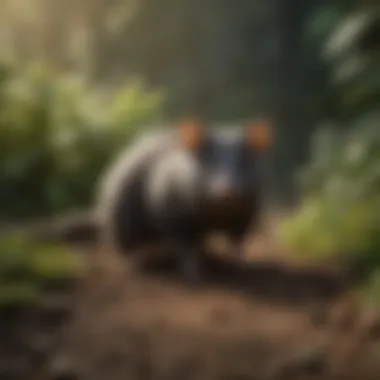
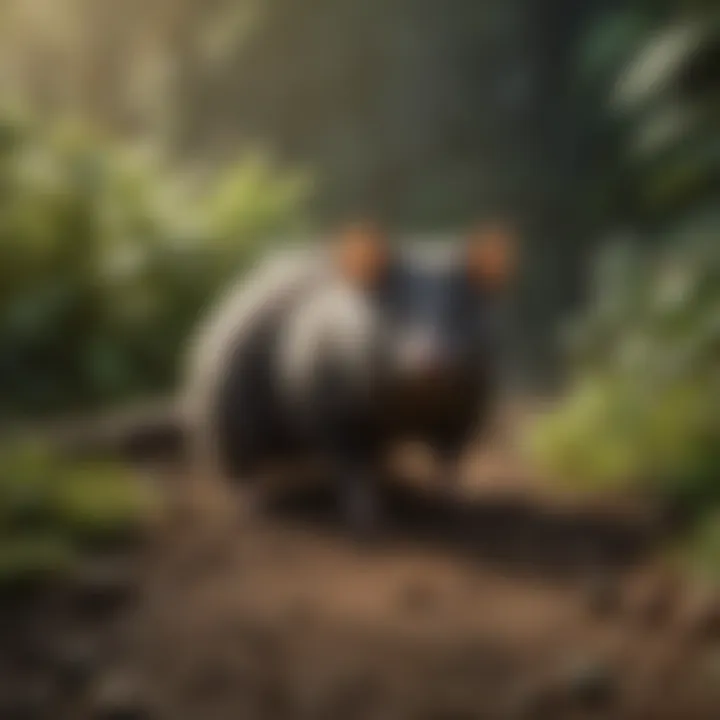
Understanding the Pest
Understanding possums is essential for effectively managing any infestation. Possums are nocturnal mammals often recognized by their unique appearance and behaviors. While they can be beneficial to the ecosystem by controlling pests, their presence in residential areas poses certain challenges.
Identification
Possums can be identified by their grayish fur, pointed snouts, and large ears. They generally grow to about the size of a domestic cat, although some can be larger. The Virginia opossum, commonly found in North America, is often distinguished by its prehensile tail and its tendency to play dead when threatened, a behavior known as thanatosis.
Life Cycle
The life cycle of possums involves several key stages. Breeding usually occurs in late winter to early spring, resulting in litters of typically six to seven young. After a gestation period of about 12 days, the tiny, underdeveloped babies crawl into their mother's pouch, where they stay for approximately two months. After leaving the pouch, they will continue to ride on their mother's back for several additional weeks, learning survival skills along the way. Understanding these stages can help homeowners anticipate when possums are most active.
Pest Prevention Strategies
Prevention is often the best strategy when it comes to managing possum populations in your area. Here are two main approaches:
Environment Modification
Modifying the environment around your home can significantly deter possums from taking up residence. Here are some effective strategies:
- Remove food sources: Secure trash bins with tight-fitting lids, and avoid leaving pet food outside.
- Clear clutter: Eliminate hiding spots by clearing debris, such as stacks of wood or tall grass, where possums may nest.
- Protect gardens: Use fencing or companion planting to keep possums away from fruits and vegetables.
Physical Barriers
Installing physical barriers can be an effective way to deter possums. Consider these options:
- Fencing: Install a fence that is at least four feet high and extends a foot underground to prevent burrowing.
- Garden nets: Use nets to cover vulnerable plants and prevent possums from accessing them.
Control Methods
When prevention fails, physical and natural control methods can be implemented. It is crucial to approach these methods with respect for the animals involved and the environment.
Chemical Control
Using chemicals should be a last resort due to their potential harm to other wildlife and pets. Non-toxic repellents can be considered instead. Some recipes involve using ingredients like vinegar or essential oils, which may repel possums more naturally while fostering an eco-friendly approach.
Biological Control
Biological methods involve using natural predators or deterrents. For example, introducing owls or hawks can help control possum populations. Additionally, employing guard animals, like dogs or goats, can keep possums at bay without harming them.
"Possums, while often considered pests, play a significant ecological role and can coexist with humans if we manage our environments carefully."
Understanding Possums
Understanding possums is essential for addressing the challenges they present. Possums are often misunderstood creatures. Freedom from their presence in our homes requires knowledge about their characteristics, behavior, and ecological contributions. This section serves as a foundation to navigate effective strategies for managing possum infestations.
Defining the Possum
Possums belong to various marsupial species, primarily found in Australia and the Americas. The common brush-tail possum is a well-known urban dweller in Australia, while the opossum is prevalent in North America. These nocturnal animals exhibit a distinctive appearance with a fur-covered tail and large eyes, both adapted for living in trees and urban settings. Their diet is omnivorous, feeding on fruits, insects, and even small animals, making them adaptable to various environments.
Possum Behavior and Habits
Possums are generally solitary and nocturnal. Their activity peaks during the night. They are known for their scavenging behavior. Often, they rummage through trash cans for food, leading to conflicts with homeowners. Possums are also territorial and mark their areas with scent, being less aggressive than perceived. Interestingly, when threatened, they may mimic death, remaining motionless to discourage predators. Understanding these habits is crucial for preventing property damage and other unwanted interactions.
The Ecological Role of Possums
Possums play an important role in their ecosystems. They contribute to seed dispersal, promoting plant growth. They are also part of the food chain, serving as prey for larger predators. Despite being viewed as pests, they help control insect populations and clean up decaying matter. Thus, their ecological function is beneficial and helps maintain balance. Educating ourselves about these aspects enriches our approach towards possums.
"Possums inadvertently assist in maintaining healthy ecosystems through their natural behaviors."
In summary, a deep understanding of possums enhances our ability to coexist. It opens pathways to practical solutions and mitigates adverse impacts on properties.
The Issues Raised by Possums
Understanding the issues that possums can raise is essential for homeowners. Possums, despite their ecological benefits, often cause frustration and concern. Recognizing the problems they present can inform better management strategies. This awareness allows individuals to be proactive, safeguarding their properties and health.
Property Damage
Possums are notorious for their potential to cause property damage. They may rummage through gardens, overturning plants in search of food or shelter. This behavior can lead to unsightly spaces and the loss of cherished plants. Furthermore, possums are known to invade attics and basements. They sometimes chew through electrical wiring, posing a fire hazard. Other common property damages include chewing on wood structures, which can weaken a home’s integrity. Addressing the property damage that possums cause is vital for maintaining a safe and inviting environment.
Health and Safety Concerns
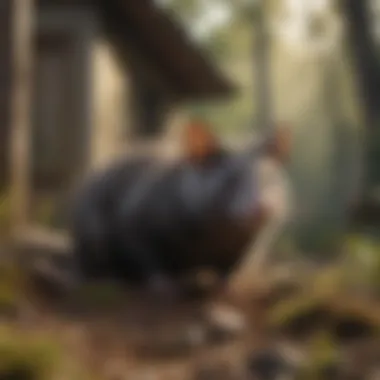
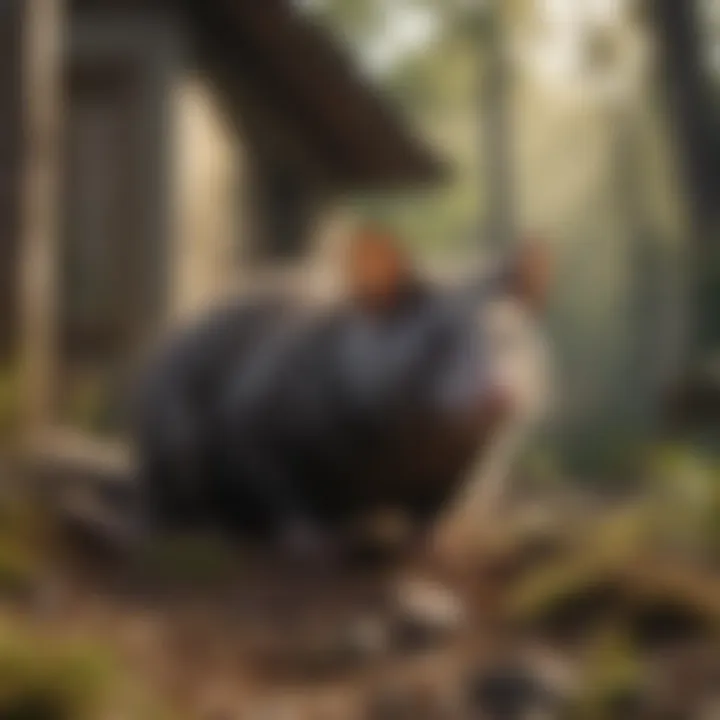
Another serious issue presented by possums is related to health and safety. These creatures are known carriers of various diseases, including leptospirosis and tuberculosis. They can also harbor parasites, such as fleas and ticks, which may transfer to pets or humans. The mere presence of possums can lead to stress for homeowners, particularly if they have small children or pets. This anxiety can result in excess vigilance and disruption to the household. Moreover, encounters between pets and possums can lead to injuries, thus posing a threat to beloved animals. It’s crucial to understand these health implications when dealing with possums.
Legal Considerations
Lastly, there are legal considerations regarding possum management. Many regions have established wildlife protection laws. Homeowners should be informed about these regulations to avoid issues with local authorities. Some areas might have guidelines for handling possums, emphasizing humane removal and control methods. Noncompliance can lead to fines or legal action. Knowing local laws not only fosters responsible management but also ensures that the actions taken against possums align with legal requirements. This knowledge is essential for anyone facing possum-related problems.
Assessment and Prevention Strategies
Understanding the nuances of possum management begins with effective assessment and prevention strategies. Homeowners often underestimate the need for these preparatory measures. By identifying the problem early and implementing preventive tactics, one can mitigate potential issues before they escalate.
First, assessment strategies aid in recognizing potential risks associated with possum activity. This awareness allows for informed decisions regarding control measures. Prevention is equally crucial; it minimizes the likelihood of possums becoming a recurring issue. An educational approach not only empowers homeowners but also cultivates a more harmonious living environment.
Consequently, both assessment and prevention are vital components in a comprehensive possum management plan that aligns with eco-friendly practices.
Identifying Signs of Possum Activity
Spotting possums before they become a nuisance involves keen observation. Recognizing their signs can greatly assist in timely management. Look for droppings that resemble large, dark seeds scattered in areas where possums wander. Tracks may also be evident, often showing a five-toed footprint with claw marks, suggesting recent movement in your yard.
Additionally, distinct sounds, especially during the night, may indicate possum presence. These nocturnal creatures are known to make rustling noises, which can be a good clue of their activities. Rather than only relying on visual cues, listening to these animals can help assess their impact in and around your home. Remember to check for signs of damage to gardens or edible plants as well. If desired areas seem to be feeding grounds, that’s a clear signal.
In summary, by monitoring these signs, homeowners can better grasp the extent of possum activity and respond accordingly.
Assessing Your Property's Vulnerabilities
To effectively manage possums, it is crucial to evaluate one's property for vulnerabilities that may provide opportunities for these animals. This process involves a systematic review of potential entry points and food sources that can attract possums.
Check for gaps under fences or around foundations where possums can enter. Additionally, assess accessibility to attics, garages, or basements, which may serve as shelters. If any trees are close to your home, they could act as bridges, allowing possums to easily access your roof.
Furthermore, it is essential to consider landscaping and garden management. Possums may be drawn to overripe fruits or easily accessible gardens. Maintaining a clean outdoor environment significantly reduces the appeal for these nocturnal visitors. Similar care should be given to trash bins, which must be securely closed to avoid attracting wildlife.
In sum, regular checks of your property can reveal vulnerabilities that need addressing. Each improvement contributes to a strategic defense against the intrusion of possums.
Home Remedies for Repelling Possums
Managing possum populations in urban and suburban areas requires a careful approach. Home remedies offer practical solutions to reduce the likelihood of possum encounters without resorting to harmful chemicals or procedures. By using natural repellents and modifying habitats, homeowners can create environments that discourage possums from approaching their properties. Understanding these methods is essential for promoting a safe and respectful coexistence with these nocturnal creatures.
Natural Repellents
Natural repellents offer an effective means of making a property less appealing to possums. The key advantage of these remedies lies in their non-toxic nature, which helps protect other wildlife and not harm pets or children. Here are several types of natural deterrents that can be implemented easily.
Strong Odors: Garlic and Onions
Garlic and onions are common kitchen items that can serve as strong repellents. Their pungent odor is known to be unpleasant to possums. This method is a beneficial choice as it is affordable and easy to use. Chopping garlic and onions and placing them around areas infested by possums can create a barrier of smell that keeps them at bay.
However, a disadvantage is that these odors may dissipate quickly, especially during rain or strong winds. Regular replenishment of these materials is necessary to maintain their effectiveness.
Essential Oils: Peppermint and Eucalyptus
Essential oils, particularly peppermint and eucalyptus, are known for their strong scents which can deter possums. These oils can be mixed with water and sprayed around the property. The key characteristic of these oils is their concentrated scent, which can linger longer than garlic or onions. This makes them a popular choice for homeowners seeking longer-lasting solutions.
On the downside, they can be more costly than typical kitchen ingredients. Additionally, the effectiveness can be less predictable based on environmental factors, such as temperature and humidity.
Spices: Cayenne Pepper and Other Enhancements
Cayenne pepper and other spices can act as a natural deterrent as well. Possums tend to avoid spicy materials, making this method both effective and easy to find in almost any household. A common approach is to mix cayenne pepper with water to create a spray and apply it in areas where possums are active.
However, one should be cautious; excessive application might irritate pets or even children. Proper attention must be given to ensure these spices do not cause unintended harm while deterring possums.
Habitat Modification Techniques
Creating an unattractive living environment for possums involves habitat modifications. Reducing accessibility to food sources and shelter opportunities can effectively limit possum presence.
Eliminating Food Sources
Eliminating food sources is crucial for controlling possum populations. This strategy involves ensuring that no food scraps are available around the property, especially in gardens or yards. Proper maintenance of outdoor spaces will discourage possums from visiting.
This approach is beneficial because it requires no special materials or complex strategies. However, it requires constant vigilance, as even small amounts of food can attract possums.
Securing Garbage Bins
Securing garbage bins can significantly reduce possum interest around your property. Using bins with tight-fitting lids can prevent possums from foraging through waste. This simple modification is cost-effective and can often be implemented with minimal effort.
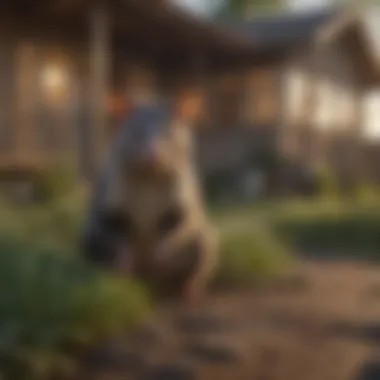
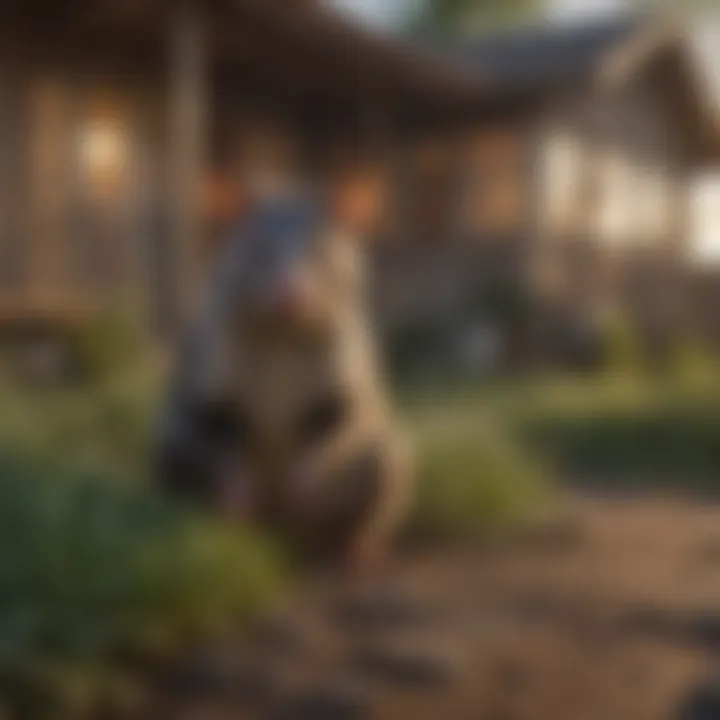
Though this method necessitates an initial investment in proper bins, it leads to long-term positive results. The drawback is that some individuals may forget to secure their bins, resulting in the likelihood of return.
Removing Shelter Opportunities
Removing shelter opportunities may involve clearing out areas of overgrown vegetation or debris. Possums are more likely to inhabit a property that offers them hiding places. By regularly maintaining yards and gardens, you can make your property less attractive to these animals.
This tactic is both proactive and preventive. However, it does require ongoing commitment to landscape maintenance, which may not be feasible for all homeowners.
Deterrence Through Physical Barriers
In the quest to manage possum populations, physical barriers serve as a proactive approach. Not only can these barriers help prevent possums from accessing your property, but they can also minimize the potential for damage and related issues. Effective use of barriers ensures that these animals are kept away without necessarily harming them, promoting a more humane method of control. In urban and suburban environments, where natural habitats are often encroached upon, it is beneficial to rely on methods that are both effective and ethically sound.
Installing Fencing
Installing fencing is a primary method of deterring possums. An ideal fence should be at least 1.5 meters high and made of materials that possums cannot easily climb over or dig underneath. Chain link, solid wood, or vinyl fencing are suitable options.
When setting up the fence, consider the following:
- Bury the Bottom Edge: Dig a trench at the base of the fence and bury the bottom edge at least 30 cm underground to prevent dig-ins.
- Overhangs: Adding an outward overhang at the top can further dissuade possums from climbing over.
- Regular Maintenance: Inspect the fence often to ensure there are no loose materials or openings.
By employing robust fencing techniques, homeowners can create a physical barrier that stops possums from accessing gardens and other vulnerable areas.
Use of Motion-Activated Devices
In addition to fencing, motion-activated devices can be highly effective in deterring possums. These technologies use movement to trigger various responses like lights or sounds that can scare away nocturnal species. They provide an additional layer of security, particularly in yards or gardens.
Ultrasonic Deterrents
Ultrasonic deterrents release high-frequency sounds that are typically inaudible to humans but can be unsettling to possums. Their effectiveness lies in their ability to create an uncomfortable environment without causing physical harm. The key characteristic of these devices is that they operate automatically, providing a continuous deterrent.
Advantages:
- Discreet and easy to install
- Can cover a large area if positioned correctly
Disadvantages:
- Their effectiveness may vary based on the individual animal's sensitivity
- Requires electricity or battery power, which may need maintaining over time.
By integrating ultrasonic deterrents into your home defense against possums, you enhance your overall strategy with minimal effort.
Effective Use of Lights
Lights can act as a straightforward yet effective method to deter possums. Motion-activated lights surprise these creatures, causing them to retreat. This method works particularly well in areas where possums roam frequently.
Key characteristics of using lights include the following:
- Visibility: Bright lights can frighten possums, causing them to avoid areas where they are activated.
- Low Cost: Compared to some other deterrents, lights are relatively affordable and easy to source.
Advantages:
- Creates a safe environment for nighttime activities in your yard
- Reduces the chances of possum intrusion considerably if installed in strategic locations.
Disadvantages:
- Lights may disturb neighbors if not positioned correctly
- Can lead to light pollution and may not be a permanent solution.
In summary, incorporating physical barriers, like fencing, along with motion-activated devices can significantly reduce possum encounters. By taking the initiative to create a less inviting environment, homeowners engage in a practical strategy for managing possum populations while maintaining a humane approach.
Community Strategies for Possum Management
In addressing possum issues, community strategies play a crucial role. It's not only about individual initiatives but also about collective action among neighbors. Possums are opportunistic and mobile creatures, making them difficult to control with isolated methods. When communities come together, they can create a more effective barrier against these animals.
Advantages of community cooperation are notable. Sharing resources and information can lead to better prevention methods. For instance, when several homes in a neighborhood adopt similar deterrent measures, such as enhanced fencing or coordinated garbage management, the odds of deterring possums increases significantly. Moreover, the sense of shared responsibility fosters an environment where everyone is engaged. This involvement can lead to more sustainable practices that benefit the entire area.
Neighborhood Coordination
Neighborhood coordination is key in tackling possum problems effectively. It encourages residents to communicate and exchange effective strategies. Regular meetings, whether in person or online, can help homeowners keep each other informed about possum activity. Such forums can address what methods are working or failing, creating a collective knowledge base that is beneficial to all.
Establishing a neighborhood task force can also be useful. This group can be responsible for organizing activities and disseminating information about possum management. Some ideas for coordination include:
- Coordinated Garbage Collection: Schedule collection days that align, preventing food sources for possums.
- Shared Tools and Resources: Pool resources to purchase deterrents like fencing, lights, or motion sensors.


"Working together makes addressing possum problems easier and more effective for all homeowners involved."
Educational Initiatives
Educational initiatives can significantly enhance community strategies. Awareness regarding possum behavior and effective management is essential. Workshops and informative sessions can share knowledge about humane deterrents and the ecological role of possums. This education ensures that community members understand how to interact responsibly with wildlife, promoting coexistence.
Utilizing local schools or community centers as venues for these sessions can increase participation. Topics might include:
- Best practices for securing garbage and minimizing attractants.
- Understanding possum behavior to reduce unwanted encounters.
- Recommendations for natural repellents and habitat modifications.
Furthermore, distributing flyers or brochures with tips and resources can serve as a handy reference for homeowners. Encouraging local social media groups to discuss possum management strategies can also foster a supportive and informed community, making it easier to address possum infestations collectively.
Ethical Considerations in Possum Management
Addressing possum management necessitates a thoughtful approach that balances human interests with the needs of wildlife. In this section, we will explore the ethical imperatives involved in managing possum populations effectively. These considerations ensure that strategies employed do not cause undue harm to these creatures, which play critical roles in their ecosystems.
When dealing with possums, it is crucial to consider the ecological impact of interventions. Many homeowners perceive possums as nuisances due to their habits and nocturnal lifestyle, but these marsupials contribute positively to the environment. They help control pest populations, such as insects and ticks, and their foraging behavior aids in seed dispersal, promoting plant growth. Thus, maintaining a balance that respects the ecological web is vital.
Impact on the Ecosystem
Possums are integral components of their habitats. Their behaviors, such as feeding on dead animals, contribute to nutrient recycling within ecosystems. This natural cleaning service prevents the spread of disease and fosters healthier environments for other wildlife. Displacing possums or using lethal methods disrupts this ecological balance, potentially leading to unforeseen consequences.
Additionally, removing possum populations can open niches for other species, which may not share the same ecological benefits. For instance, without possums to keep pest numbers in check, an increase in other animals could occur, creating new issues for gardeners and homeowners.
"Possums help control pests and support healthy ecosystems; hence, ethical management is key."
It is essential to consider non-lethal measures whenever possible. Strategies such as habitat modification should focus on deterrence without causing harm. Homeowners must remember that these creatures have a right to exist within their natural range. To further understand their role in ecosystems, resources such as Britannica and Wikipedia can provide detailed insights on the subject.
Legal Compliance and Ethical Handling
Legal frameworks often govern the treatment of wildlife, including possums. In many regions, it is illegal to harm or relocate possums without appropriate permits. Therefore, understanding local laws is crucial for anyone considering possum management. Familiarity with these regulations ensures that actions do not lead to legal penalties and promotes ethical responsibility towards wildlife.
Handling possums ethically involves using humane traps when necessary, and always complying with guidelines provided by local wildlife authorities. Any trapped animal must be treated kindly and released in suitable habitats far from residential areas.
Moreover, educating the public about the legal aspects and ethical handling of possums can foster a culture of respect for wildlife. Engaging with local communities can help share strategies that allow coexistence without resorting to harmful methods. Overall, the balance between human needs and wildlife conservation hinges on informed and ethical practices.
Long-Term Solutions for Possum Control
When dealing with possum infestations, finding long-term solutions is essential. Short-term fixes may alleviate immediate problems, but sustainable strategies ensure lasting results. These solutions not only address the possum issue but also contribute to a healthier environment, promoting coexistence without conflict.
Moreover, effective long-term management reduces the likelihood of possums returning. It involves understanding their habits and adjusting our own practices accordingly. By adopting sustainable methods, homeowners can create conditions less favorable for possums, thereby minimizing encounters. This not only protects property but also aligns with eco-friendly principles that many individuals value.
Adopting Sustainable Practices
Sustainable practices are centered on creating an environment that deters possums while supporting local wildlife. Here are a few practices:
- Maintain Cleanliness: Regularly clean gardens and yards. Remove uneaten pet food, fallen fruits, or any food sources that could attract possums.
- Native Vegetation: Plant native plants that may not be appealing to possums. These plants often thrive in the local environment, reducing the need for chemical fertilizers.
- Water Sources: Keep standing water away. Possums need water, and and a clean yard helps to prevent them from settling.
- Predator Partnership: Create an environment that encourages natural predators of possums. By allowing birds of prey or other animals to live nearby, possums can be more effectively controlled.
These actions contribute to a balanced ecosystem while addressing any current possum issues.
Monitoring and Evaluating Effectiveness
Monitoring the effectiveness of these solutions is key to long-term success. Here’s how to approach this process:
- Observe Changes: Regularly check for signs of possum activity. Fewer sightings or droppings indicate improvement.
- Track Habitat Changes: Assess how your yard or property has changed with new practices. Has the vegetation shifted? Are there fewer attractive hiding places for possums?
- Community Feedback: Engage with neighbors and local groups. Community-based actions can be more effective, and learning from others' successes can provide fresh insight.
- Adjust Strategies as Needed: Be open to modifying your approach if you notice possum activity persisting. Sometimes it may require a mix of strategies to achieve the best results.
By systematically monitoring and evaluating, homeowners can fine-tune their methods, ensuring that the possum control solutions remain efficient and relevant over time.
Finale and Next Steps
In addressing the challenge of possum infestations, it is essential to understand that effective management involves a multifaceted approach. As outlined in this article, home remedies alone may not suffice; they should be part of a broader strategy incorporating various methods. Homeowners should prioritize combining natural repellents with structural modifications to create an environment that deters possums.
By recognizing the ecological role of possums, we can adopt solutions that balance both deterrence and coexistence. It is essential to appreciate their contributions to the ecosystem, which include pest control and seed dispersal. This acknowledgment can guide the implementation of humane and environmentally friendly solutions in handling possum populations in our neighborhoods.
"Understanding and respect can go a long way when dealing with wildlife."
The engagement in responsible practices and community involvement paves the way for safer environments. Familiarizing oneself with local regulations regarding wildlife will also ensure you are compliant while addressing possum-related issues.
Recap of Key Strategies
- Natural Repellents: Utilize strong odors, such as garlic and onions, or essential oils like peppermint and eucalyptus. These can serve as effective barriers against possums.
- Habitat Modifications: It’s vital to eliminate food sources, secure garbage bins, and remove hiding spots to deter possums from settling in.
- Physical Barriers: Installing fencing and using motion-activated devices can effectively repel possums from residential properties.
- Community Strategies: Collaboration with neighbors and shared educational initiatives can lead to a more significant impact on managing possum populations, fostering a responsible approach.
Encouraging Responsible Practices
Promoting responsible practices is fundamental not only for effective possum management but also for maintaining ecological balance. Homeowners should educate themselves about the species, understanding their behavioral patterns and ecological contributions. An informed community can implement changes that respect wildlife, reducing human-animal conflicts.
Moreover, engaging in environmentally friendly practices, such as composting responsibly and proper waste management, reduces attractants around homes. Cooperation with local wildlife organizations can also provide helpful resources for long-term solutions. Empowering residents through education and awareness leads to an improved understanding of sharing spaces with wildlife responsibly.







